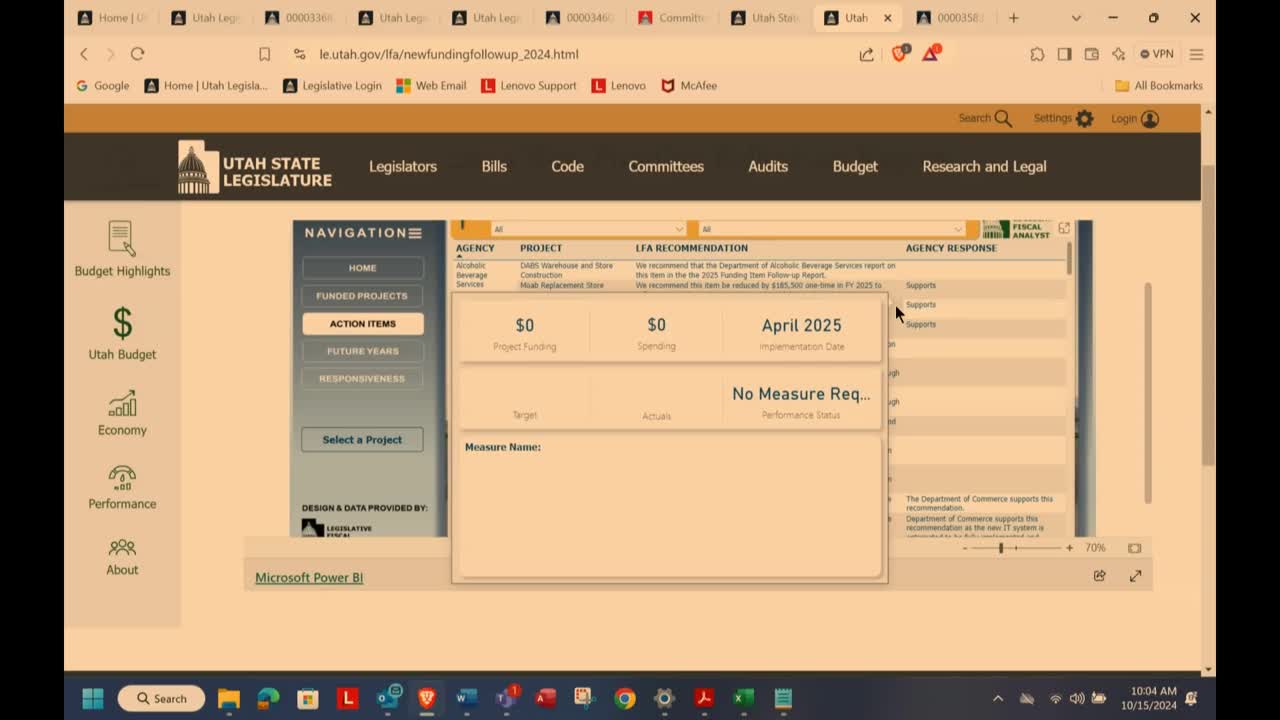Funding crisis threatens vital search and rescue services
October 15, 2024 | Utah Interim, Utah Legislative Branch, Utah
This article was created by AI summarizing key points discussed. AI makes mistakes, so for full details and context, please refer to the video of the full meeting. Please report any errors so we can fix them. Report an error »

During a recent government meeting, officials discussed the ongoing financial challenges facing the search and rescue program, highlighting a structural deficit that has persisted despite previous funding efforts. The conversation centered on the reliance on one-time funds, which have proven insufficient for ongoing operational costs.
One key issue raised was the lack of incentives for local authorities to utilize the search and rescue services judiciously. Officials noted that local sheriffs often call for aerial assistance without a clear need, leading to potential misuse of resources. This situation underscores the necessity for a pricing mechanism that could encourage more responsible usage of the service.
To address the funding shortfall, several proposals were put forward. One suggestion included increasing the Off-Highway Vehicle (OHV) fee by $1, which could generate approximately $240,000 in revenue. Additionally, officials discussed the possibility of reallocating a portion of the Transient Room Tax (TRT) collected from local accommodations to support search and rescue efforts. This could involve charging the Department of Public Safety (DPS) before funds are distributed to local entities.
Another option considered was integrating search and rescue costs into the existing fee structures of state parks, thereby ensuring that visitors contribute to the funding of these essential services upfront.
Lastly, the meeting addressed the inefficacy of the current search and rescue fee structure, which does not charge individuals for rescue services rendered. Officials acknowledged that while there are provisions for billing, they are not actively enforced, leading to a gap in revenue that could support the program.
The discussions reflect a critical need for innovative funding solutions to sustain search and rescue operations, ensuring that they remain effective and responsive to community needs.
One key issue raised was the lack of incentives for local authorities to utilize the search and rescue services judiciously. Officials noted that local sheriffs often call for aerial assistance without a clear need, leading to potential misuse of resources. This situation underscores the necessity for a pricing mechanism that could encourage more responsible usage of the service.
To address the funding shortfall, several proposals were put forward. One suggestion included increasing the Off-Highway Vehicle (OHV) fee by $1, which could generate approximately $240,000 in revenue. Additionally, officials discussed the possibility of reallocating a portion of the Transient Room Tax (TRT) collected from local accommodations to support search and rescue efforts. This could involve charging the Department of Public Safety (DPS) before funds are distributed to local entities.
Another option considered was integrating search and rescue costs into the existing fee structures of state parks, thereby ensuring that visitors contribute to the funding of these essential services upfront.
Lastly, the meeting addressed the inefficacy of the current search and rescue fee structure, which does not charge individuals for rescue services rendered. Officials acknowledged that while there are provisions for billing, they are not actively enforced, leading to a gap in revenue that could support the program.
The discussions reflect a critical need for innovative funding solutions to sustain search and rescue operations, ensuring that they remain effective and responsive to community needs.
View full meeting
This article is based on a recent meeting—watch the full video and explore the complete transcript for deeper insights into the discussion.
View full meeting

